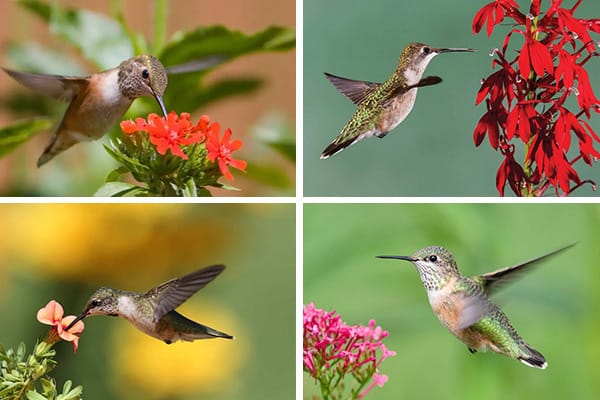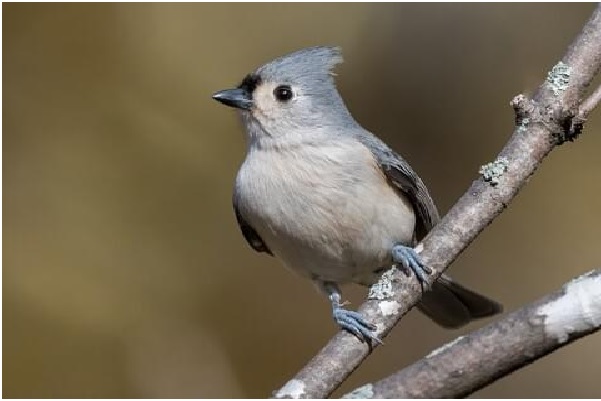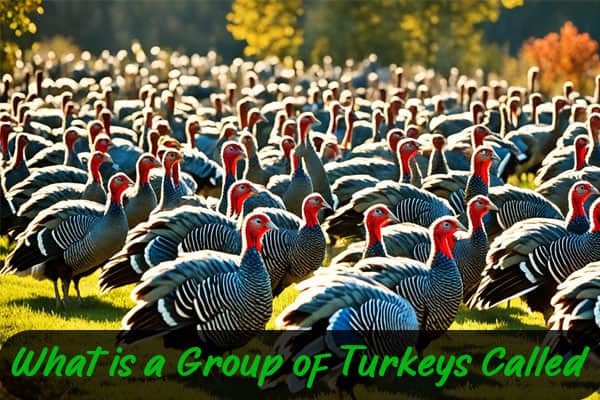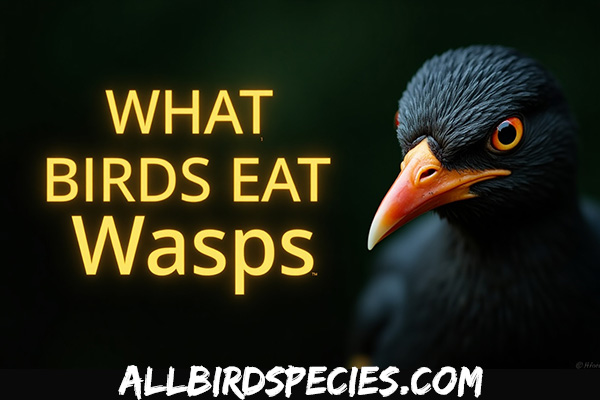7 Proven Ways to Attract Pileated Woodpeckers to Your Yard
Have you ever seen a pileated woodpeckers in your neighborhood and wished you could attract these impressive birds to your own yard? With their striking appearance and distinctive call, these birds are a delight to observe. Fortunately, there are steps you can take to make your yard a welcoming haven for pileated woodpeckers.
If you’re a bird enthusiast looking to bring more wildlife into your yard, attracting pileated woodpeckers can be a rewarding experience. In this article, we’ll explore 7 tips and strategies for attracting pileated woodpeckers to your yard.
1. Provide suitable habitat for pileated woodpeckers by leaving dead or decaying trees in your yard
To provide a suitable habitat for pileated woodpeckers in your yard, one of the most important steps is to leave dead or decaying trees intact. These trees are crucial for attracting pileated woodpeckers due to the abundant food sources they provide in the form of wood-boring insects.
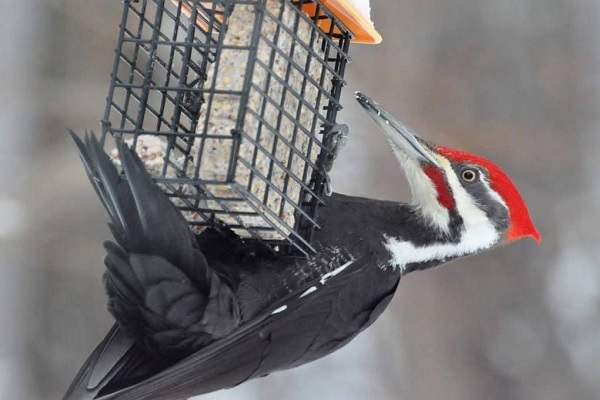
Dead or decaying trees serve as a gold mine for pileated woodpeckers, as they contain an abundance of wood-boring insects like beetles, ants, and termites. These insects thrive in decaying wood, making it a highly nutritious food source for the woodpeckers. By leaving dead or decaying trees in your yard, you are offering a ready-made buffet for pileated woodpeckers to feast upon.
Moreover, pileated woodpeckers have a strong preference for large trees, especially those with dead or decaying wood. These trees provide ideal nesting sites for the woodpeckers, as the soft and weakened wood is easier for them to excavate. Large trees can also attract a wide range of other bird species, creating a diverse and vibrant ecosystem in your yard.
Also Read Owls in Missouri
2. Offer a variety of food sources such as suet, nuts, and insects
To attract pileated woodpeckers, it is important to offer a variety of food sources such as suet, nuts, and insects.
Suet, a high-energy food made from animal fats, is a favorite of pileated woodpeckers. It provides them with the necessary calories to sustain their active lifestyles. Nuts, especially those rich in oils like almonds and walnuts, are also highly desired by these woodpeckers. They not only provide a good source of protein but also contribute to their overall nutritional intake. And let’s not forget insects! Pileated woodpeckers absolutely adore them. They have a strong beak and a long, sticky tongue that allows them to extract insects hidden beneath the bark of trees or within decaying logs.
Offering a variety of these food sources is crucial to attracting pileated woodpeckers. By doing so, you are able to mimic their natural foraging habitats and provide them with the diverse diet they require. This not only ensures their nutritional needs are met but also increases the likelihood of them visiting your yard. When you provide a variety of food options, you cater to their preferences and create a welcoming environment that pileated woodpeckers will find irresistible. So, if you want to enjoy the presence of these striking birds in your yard, be sure to lure them with an assortment of suet, nuts, and insects.
3. Install a bird feeder specifically designed for pileated woodpeckers
Installing a bird feeder specifically designed for pileated woodpeckers requires careful consideration of their large size and feeding habits. Follow these steps to ensure a successful setup:
- Choose the location: Select a spot that is easily visible for bird watching but also offers some privacy for the woodpeckers. Ideally, the feeder should be near trees or wooded areas where these birds are commonly found.
- Prepare the feeder: Look for a bird feeder design that can accommodate the pileated woodpecker’s large size. Opt for feeders made from sturdy materials like metal or durable plastic to withstand their strong pecking.
- Install the feeder: Attach the feeder securely to a tree trunk or post. Make sure it is firm and stable to prevent it from swinging or falling under the weight of the woodpecker. It should also be at a suitable height, around 4 to 6 feet above the ground.
- Select suitable food: Pileated woodpeckers primarily feed on insects found in trees, but they also enjoy suet and nuts. Fill the feeder with high-quality suet cakes or a mixture of nuts like peanuts, almonds, and sunflower seeds to attract these birds.
Using a feeder specifically designed for pileated woodpeckers is important for several reasons. Firstly, their large size requires a feeder that can accommodate their body size and be sturdy enough to handle their aggressive feeding behavior. Secondly, using a specialized feeder helps to prevent other smaller birds from accessing the food, as it may not be suitable for them.
Recommended woodpecker feeders suitable for attracting pileated woodpeckers include the WoodLink PRO4 Squirrel-Proof Bird Feeder, the Woodlink Going Green Recycled Plastic Ranch Feeder, and the Nature’s Way Cedar Upside Down Suet Feeder. These feeders are designed to withstand the powerful pecking of pileated woodpeckers, while also keeping the food secure and protected.
You may want to read Blue Jay Sign From Heaven: A Spiritual Message
4. Create a water source such as a birdbath or fountain
One of the best ways to provide a clean and accessible water source for birds is by setting up a birdbath or fountain in your backyard. It is essential to ensure regular cleaning to remove debris and prevent mosquito breeding.
To start, choose a suitable location for your bird bath or fountain, preferably in a shaded area to prevent the water from becoming too hot. Fill the birdbath or fountain with clean water, making sure to avoid using any chemicals or additives that may be harmful to birds.
Regular cleaning is crucial. Remove any debris, such as leaves or twigs, from the water daily. It is best to scrub the birdbath or fountain with a brush regularly to prevent the buildup of algae or bacteria. This will help keep the water clean and safe for the birds to drink and bathe in.
Consider installing a fountain with a sprayer or mechanism to move the water. This not only helps to keep the water fresh by preventing stagnation but also adds a visual element that can attract birds to the water source. The sound of moving water can be particularly appealing to birds.
There are various types of birdbaths and accessories available to suit different preferences and needs. Heated birdbaths are excellent for colder climates to prevent the water from freezing during winter months. Solar-powered bird baths are an eco-friendly option that uses sunlight to power features such as a fountain or heater.
For bird enthusiasts looking to attract pileated woodpeckers, a solar-powered bubbler system can be a great addition. The bubbling water will not only catch their attention, but it also helps deter mosquitoes, as they prefer still water for breeding.
5. Avoid using pesticides that could harm woodpeckers or their food sources
Pesticides play a crucial role in protecting crops and controlling unwanted pests. However, it is essential to avoid using pesticides that could harm woodpeckers or their food sources. Woodpeckers are vital insectivores that play a crucial role in balancing the ecosystem and maintaining a healthy forest environment.
Pesticides can have detrimental effects on woodpeckers and their natural habitats. The chemicals present in pesticides can contaminate the insects that form the main food source for woodpeckers, disrupting their feeding patterns and potentially leading to a decline in their population. Moreover, woodpeckers often forage on the bark of trees, which can absorb pesticides, thereby directly exposing them to these harmful chemicals. Pesticides can accumulate in their bodies, leading to poisoning, impaired reproduction, and even death.
To safeguard woodpeckers and their natural habitats, it is essential to adopt alternative pest control methods that are safe for these birds. Integrated Pest Management (IPM) is one such approach that focuses on environmentally friendly pest control techniques. IPM involves a combination of strategies such as biological controls, habitat manipulation, and the use of non-toxic pest control products. For example, encouraging natural predators of harmful insects, planting native vegetation that attracts beneficial insects, and using pheromone traps are effective ways to control pests without harming woodpeckers.
6. Play recordings of pileated woodpeckers calls to attract them to your yard
If you want to attract pileated woodpeckers to your yard, playing recordings of their calls can be an effective method. Here are the steps to do so:
- Research and find high-quality recordings: Look for authentic recordings of pileated woodpeckers calls. You can search online or visit local birding websites to find reputable sources.
- Purchase or download the recordings: Once you have found suitable recordings, purchase them from a reliable source or download them from a trusted website. Make sure the recordings are in a format that can be played in your yard, such as MP3 or WAV.
- Choose the appropriate playback device: Decide on a device to play the recordings. This could be a portable speaker, a CD player with external speakers, or even a smartphone connected to Bluetooth speakers.
- Position the speakers strategically: Select a location in your yard that is close to trees or wooded areas, as this is where pileated woodpeckers are most likely to be found. Place the speakers at a height that resembles the natural position of a woodpecker in a tree.
- Play the recordings at strategic times: Research the typical times when pileated woodpeckers are most active and likely to respond to calls. Play the recordings during these times for the best chance of attracting them.
By following these steps and playing recordings of pileated woodpeckers calls in your yard, you can increase the likelihood of attracting these fascinating birds to your property.
7. Be Patient and Persistent
Attracting pileated woodpeckers to your yard requires patience and persistence as it may take some time for them to discover and start frequenting your yard.. By providing a suitable habitat with mature trees, varied food sources, and patiently allowing the birds to become comfortable in your presence, you increase the chances of these stunning woodpeckers discovering and frequently visiting your yard.
Conclusion:
Attracting pileated woodpeckers to your yard can be a rewarding experience for bird enthusiasts. By implementing some or all of these proven methods such as providing specific types of food, proper habitat, and minimizing disturbances, you can create an environment that is welcoming to these magnificent birds.
With a little patience and dedication, you’ll soon be able to enjoy the sight and sounds of pileated woodpeckers in your own backyard. So set up your bird feeders, plant native trees, and create a natural habitat that will attract these beautiful and unique birds to visit regularly.
You may want to read about Common Types of Birds Found in Spain

